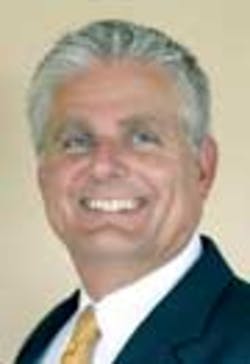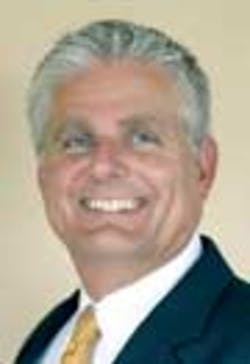In May 2013, according to the Department of Health and Human Services (HHS), more than 50 percent of eligible providers reported adoption or use of electronic health records (EHRs).1 Widely known as a challenging transition, EHR implementation and use can affect three keys areas of healthcare: cost, quality and patient experience. Effective use of the documentation system – specifically, using dictation to create narrative content placed in the EHR – can positively impact all three.
The benefits of dictation
The use of dictation can directly affect the bottom line through both cost-effective allotment of resources and retained physician productivity that, in turn, retain revenue capacity. While point-and-click and front-end speech-recognition systems are used within many organizations today, they place the burden of documentation creation on the most expensive resource – the physician. When medical documentation specialists complete patient-encounter notes, the data-entry costs associated with creating the EHR documentation are much lower. Continuing to use dictation before, during and after an EHR implementation requires minimal changes in workflow, simplifies training and does not negatively impact productivity. This approach to documentation is what many specialty physicians desire. “Physicians want to do what they have done for years – and have someone else document in the system,” says Jonathan Bauer, CIO, Somerset (Pa.) Hospital.2
Through the use of EHR templates to outline dictation content, facilities decrease the amount of typing required (reducing transcription fees) and also speed dictation time by prompting the physician for pertinent information needed to complete the narrative. Dictation protects efficiency, enabling physicians to keep pace with their patient workload and avoid affecting their bottom line. A study published in the March 2013 issue of Health Affairs noted that one of the ways practices received positive returns from their EHR was to increase revenue by seeing more patients.3
The medical documentation specialist plays a vital role in the quality of patient care by identifying errors and supporting the inclusion of narrative content. An anecdotal study showed that almost a quarter of errors corrected in content generated by speech recognition engines were medication errors.4 By bringing another pair of eyes to the documentation – eyes that can correct life-threatening errors – medical transcription can serve an advantageous role in patient safety. In addition, dictation makes it easy for physicians to enhance documentation with a more complete, contextual and meaningful note placed into the EHR. A conversational, narrative expression of the patient story allows physicians to clearly outline their observations, assessments and the patient’s condition – information that cannot be captured in discrete data points – and facilitates quick review and understanding of the complete picture of health. The more nuanced notes that can distinguish improvement or lack of improvement in a patient’s state of being can only further the physician’s ability to diagnose and treat patients.
When the task of documentation can be completed outside the exam room, physicians can more readily engage with their patients, improving the quality of care. Dictation – especially compounded with the robust functionality and flexibility of mobile applications now available – benefits both the patient and the physician. Gone are the computer screen, keyboard and mouse that hinder the patient interaction. When a physician feels unencumbered by documentation duties, he or she is free to provide more focused care that comforts and reassures the patient.
Key requirements of documenting with dictation
System interfaces are key to the effective use of dictation as a documentation method. Integration into the EHR of physician schedules, patient demographics, document templates and discrete data broadens the power of dictation. A hybrid documentation method supports meaningful-use objectives by capturing structured data and auto-populating content using standardized terminology. Narrative content that is automatically placed into specified sections of the EHR – HPI, physical exam, ROS, assessment, chief complaint and assessment plan – extends the usability of a comprehensive patient record. The integrated solution should accommodate a customized workflow that aligns with internal routing and delivery processes and enables real-time data transfer.
Take advantage of the freedom of dictation by providing clinicians with a user experience that exceeds their experience at a workstation. Currently, mobile applications facilitate the streamlined use of dictation to document. The best applications can be customized to any workflow, eliminating changes in the status quo. Cross-platform functionality – including iOS, Android and Windows – supports the bring-your-own-device approach that is commonplace across the healthcare industry.
By its nature, dictation requires data to be transferred for processing, prompting security considerations. The Health Insurance Portability and Accountability Act (HIPAA) was written to protect patient privacy through national standards and security requirements, regardless of the capture method. Patient data must be stored on a secure server, and the transmission of data must be encrypted as it passes over networks. Access rights and roles should be assigned appropriately for each user.
Dictation success stories
Medical practices that seek to maximize physician productivity while making the most of their EHR have found great success by employing dictation. Illinois Bone & Joint Institute (IBJI), one of the largest orthopedic group practices in Illinois, empowers their physicians with mobile efficiencies and controls costs through dictation.
“Our mobile solution allows providers to dictate on the fly, upload, review, edit and authenticate with ease,” says Clara Joyce, practice administrator, IBJI – Libertyville. “It gives them the freedom to focus on their patients during exams and quickly complete the task of documentation, saving us time and money.” An extensive library of templates based on sample transcriptions accelerates the dictation process by prompting the clinician to enter appropriate information within system-generated content. Patient records are completed more quickly, and costs are contained by reducing the amount of transcriptions required.
For Midwest Orthopaedics at Rush (MOR), a private orthopedic medical practice affiliated with Rush University Medical Center in Chicago, dictating on a mobile platform eliminated disruptive operational changes; they chose an easy-to-learn mobile application available for iPhone or Android devices. “The mobile app makes our documentation procedures and our staff more efficient,” says Dennis Viellieu, CEO, Midwest Orthopaedics at Rush. “Beyond that measurable value, the application’s efficiencies and extensive templating capabilities reduced our documentation costs by 40 percent.”
St. Cloud Orthopedics in Sartell, Minn., earned $342,000 in Medicare incentive payments by successfully meeting meaningful use while dictating.5 David L. Kaus, M.D., and practice administrator Bill Worzala reviewed and refused point-and-click, templated EHR systems due to the productivity impact. Instead, they chose to use a combination of dictation and templates.
Dictation and EHRs – a winning combination
When an EHR is well designed, it can improve patient safety and ease physician responsibilities. By adding dictation, patient documentation is created without unduly taxing physicians, compromising thorough documentation or incurring excessive costs. Medical facilities, physicians and patients alike can benefit.
1. http://medcitynews.com/2013/05/ehr-adoption-reaches-tipping-point-but-challenges-remain/#ixzz2aXuEr3rg
2. http://www.beckershospitalreview.com/healthcare-information-technology/5-healthcare-leaders-discuss-the-challenges-of-emr-adoption-implementation.html
3. http://www.beckershospitalreview.com/healthcare-information-technology/physicians-may-lose-over-40000-in-5-years-after-ehr-adoption.html
4. http://mtinnercircle.com/2011/10/07/medical-transcription-identifying-errors-protecting-patients/#sthash.PqyVeYiK.dpuf
5. http://www.aaos.org/news/aaosnow/jun13/managing3.asp
About the author
Randy Olver is CEO of Emdat.
For more on Emdat: click here



